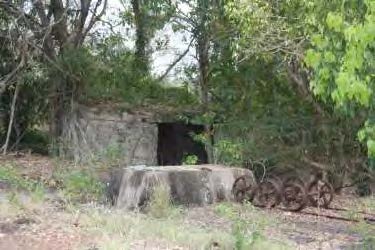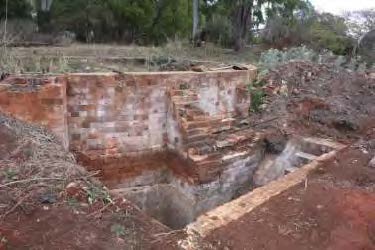
The Isis district became an important sugar cane farming and refining area from the 1880s, after first blocks of land in the district were selected in the early 1870s and the town of Abingdon was formed with a hotel and school.
The Colonial Sugar Refinery (CSR) Childers Mill, established at Huxley in 1894, was the largest and most technically advanced in the district at the time, and the site of the mill is listed among Bundaberg Regional Council’s Local Heritage Places.
CSR was formed in Sydney in 1855, at first importing sugar into the Australian colonies, before establishing its first sugar mills from the 1870s.
It eventually became the most dominant sugar refinery company in Australia.
The first mill in the Isis district was Doolbi juice mill, established in 1890 by Robert Cran to supply juice to his Yengarie sugar mill near Maryborough, and which became the catalyst for the sugar industry in the Isis district.
Horton Mill, established by William Horton in 1893, was the first to produce raw sugar in the Isis, followed by Knockroe Sugar Mill in 1893, CSR Childers Mill at Huxley in 1894, and Isis Central Sugar Mill in 1897.
Having many competing mills in the district meant that periods of drought or heavy frost could severely impact cane supply and crushing operations, and therefore profits.
As mills sought sufficient supply of cane for the scale of their production, they began to look further afield, receiving cane from Booyal, Dallarnit and Pialba in Hervey Bay.
Economies of scale were necessary for mills to remain viable, leading to fewer mills with more crushing power.
Horton Mill closed after two seasons as farmers preferred to sell their cane to CSR, followed by Knockroe Mill in 1901 and Doolbi Mill in 1924.

The CSR and Central Mills competed continuously from the early 1900s as they sought to secure an increased cane supply from the closure of the surrounding mills.
The Childers Mill was managed until 1912 by Rudolph Helms, husband of Sabine Helms who became a noted botanist in the district, with ‘Helms Scrub’ named in her honour.
CSR purchased the Knockroe Mill and cane producing land in 1901, but Central Mill surprised CSR management when they secured Doolbi Mill in 1924.
In the mid-1920s, Central Mill’s representative Alexander Adie proposed to CSR that it should purchase the Central Mill, as it was believed only one mill could be profitable in the district.
However, by this time, CSR had decided to leave the Isis district and concentrate on its more profitable northern mills, particularly around Mackay.
The CSR Childers Mill closed in 1932 and moved the majority of its equipment to north Queensland.
Central Mill purchased the CSR tram network and dam.

Over time, the remains of the mill site became covered with vegetation or were used as agricultural land.
Remnant structures on the heritage site include brick and concrete footings, stairs to an underground ventilation tunnel, concrete mounts and sumps of former crushing and milling equipment, cane tram tracks and wagon parts.
As the mill was not developed past 1932, the site has the potential to yield more valuable information about the region’s history and Australia’s sugar milling history.
Read more history stories:





quite bland to what i come across. To even mention Cran, but not his use of SSI labour is pathetic. Again, Archive Records are more revealing. anyone ever seen the deed? i have.
Many years after Huxley Mill closed as a working Mill, it was used as a depot for loaded and empty wagons of cane. Cane from the South ISIS area etc. Would be hauled into here and another train would take them to the Isis Central Mill. Huxley depot had a few men working out of there.